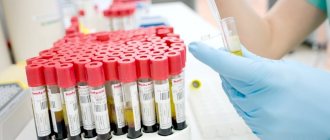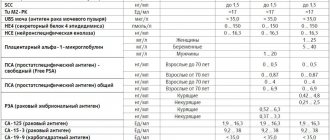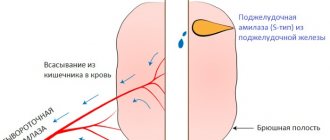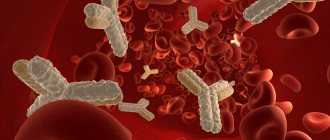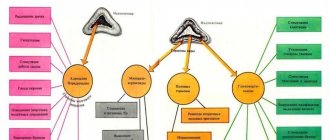What is echogenicity?
In order to understand what the anechoicity of the gallbladder may indicate, you need to understand the definition and properties of ultrasound. Some facts that will help you understand the essence of ultrasonic waves:
- Ultrasound is elastic vibrations of particles of a medium that propagate in the form of a longitudinal wave.
- It can exist in liquid, gaseous or solid media, but ends up in a vacuum.
- Some animals use it as a means of communication, but it is not inaudible to the human ear.
It is used in the diagnosis of internal diseases due to its properties. Ultrasound waves are absorbed by soft tissues and reflected from inhomogeneities.
The process of obtaining an image from an ultrasound machine occurs in two stages:
- radiation of a wave into the tissue being examined;
- receiving reflected signals, on the basis of which an image of internal organs is formed on the screen.
Due to the different structure and density of tissues and internal organs, they reflect ultrasound waves differently. In addition, this property also changes in various pathologies, which makes it possible to identify many diseases, including the gallbladder. To describe the resulting image, special terminology is used, which should be familiar not only to ultrasound specialists, but also to general practitioners.
Based on this feature, several types of fabrics can be distinguished:
- hyperechoic objects (bones, gas, collagen) are structures that reflect a large number of ultrasound rays and appear on the screen as bright white foci;
- hypoechoic (soft tissues) - partially reflect the ultrasound beam, are different shades of gray;
- anechoic (fluid) are areas that do not reflect ultrasound and appear as black lesions.
From this we can conclude that the anechoic contents in the gallbladder are liquid. To make a diagnosis, you need to understand how this organ should normally look on an ultrasound and what the presence of fluid in its cavity may indicate.
Changes in echogenicity during pregnancy
Acoustic changes can occur in fetal and maternal tissues. The doctor may notice some pathologies in the intestines of the unborn child. Often they talk about ischemia of this organ, cystic fibrosis, developmental delay. When an organ is perforated, an increase in its echogenicity is also noticeable.
The doctor also determines the ultrasonic density of the placenta. An increase in it indicates the onset of an organ infarction, detachment, as well as the presence of calcifications in it. Normally, calcifications can only appear after the 30th week of pregnancy.
An increase in ultrasound density of amniotic fluid is normal, but only after the 30th week. If such a change is determined before this period, then additional examination is required for the mother and fetus.
What does the gallbladder look like on an ultrasound scan normally?
The gallbladder is pear-shaped. There are 3 main elements in its structure:
- bottom - a wide edge that protrudes slightly beyond the liver;
- the body is its main part;
- neck - narrowing of the bladder at its exit.
The gallbladder is a hollow organ; it has a wall and a cavity where bile accumulates. Like other similar organs, it is built of muscle tissue, which is lined inside with a mucous membrane with a large number of folds and glands. On the outside, it is partially covered with a serous membrane.
The need for a reservoir for bile arose due to the fact that it does not enter the intestines constantly, but only during the digestion process. Ultrasound diagnostics are carried out on an empty stomach (even drinking water before the examination is prohibited) so that bile accumulates in the bladder and it is possible to examine its contents and walls.
Bile is produced in the liver and flows down the hepatic duct into the gallbladder. If there is an immediate need for it, it moves further along the bile duct into the duodenum. If this is not necessary, the sphincters contract and do not release bile from the bladder. Until food reaches the stomach, it will accumulate in the gallbladder and stretch its walls. As soon as the digestion process begins, the muscles of the bladder walls contract, and the muscles of the sphincter and bile duct, on the contrary, relax. Therefore, during an ultrasound after eating, the bladder will be empty, and it will not be possible to accurately determine its size and the nature of the contents.
Normally, the gallbladder indicators will be as follows:
- pear-shaped;
- dimensions: 8-14 mm in length, 3-5 mm in width;
- the location is intrahepatic, only the bottom of the bladder extends beyond the liver;
- the contours are smooth and clear;
- wall thickness - up to 3 mm;
- homogeneous anechoic contents.
Any deviations from the norm indicate the presence of pathology. Thus, the walls of the bladder thicken during inflammatory processes, and the abnormal structure of the bladder will impede the outflow of bile, and it will accumulate in its cavity in large quantities. The contents are examined if gallstones and other diseases are suspected; in such cases it becomes echogenic.
Symptoms of pathology
The presence and nature of symptoms directly depends on the underlying disease that caused the increase in reflection characteristics. As a rule, these are typical signs of liver disease.
Unpleasant sensations in the right hypochondrium - discomfort, pain, bloating, heaviness.- Yellowness of the sclera and skin.
- Bitterness in the mouth.
- Gastrointestinal dysfunction - nausea, vomiting, diarrhea, flatulence.
- Rashes and skin itching.
- General malaise, causeless fever, weakness.
- Decreased immunity.
The human liver is a very “patient” organ. For a long time she “can hide” her unsatisfactory condition, not get sick or bother her. Therefore, you should not wait for symptoms to appear. You need to take care of your liver in advance, especially when a person leads a sedentary lifestyle, overeats, drinks alcohol, or works in hazardous work. To neutralize the influence of negative factors, you should cleanse your body and liver. To do this, you need to choose natural products with properties beneficial to the gland. Taking natural complexes will help normalize liver function and protect it from damage.
Rules for performing ultrasound of the gallbladder
In order for the research results to be as reliable as possible, it is better to start preparing in advance. At the initial examination, the doctor will set a date for the examination and tell you how to properly prepare for it. The exception is in emergency cases when there is a risk of blockage of the bile ducts with stones or urgent surgery is required.
For a routine ultrasound, the patient should adhere to a few simple rules:
- a week before the ultrasound, exclude from their diet alcohol, fatty foods and those that cause increased gas production (carbonated drinks, yeast bread, raw fruits and vegetables, legumes);
- It is recommended to start taking medications (Mezim, Espumisan and the like) 3 days in advance;
- Before the test, you should not eat for 8 hours.
If the ultrasound is scheduled for the first half of the day, you should skip breakfast and water. Dinner the day before should be no later than 19.00. If the procedure will be carried out in the evening, you can have breakfast around 7 am.
Anechoic contents in the gallbladder are normal. It means that the bladder is filled with bile, in which there is no sediment or foreign substances. This is an important factor in the diagnosis of helminthiases, cholelithiasis and other pathologies. Ultrasound of the gallbladder is also included in a routine examination of the abdominal cavity. In addition to this indicator, attention is paid to the size and shape of the organ, the thickness and uniformity of its walls. The indicators are written on a form and given to the attending physician, who then interprets them based on clinical signs.
Ultrasound examination of the gallbladder can be performed either independently or as part of complex visualization of the abdominal organs. The procedure is prescribed if there are symptoms indicating the development of gallstone pathology or other diseases. In the transcript of results, the phrase “anechoic contents of the gallbladder” is sometimes found. What is hidden behind this concept?
What is deformation and bending
Deformation and bending of the gallbladder are closely related to the compaction of its walls. This phenomenon is observed in chronic cholecystitis, adhesions, injuries to internal organs, the formation of gallstones and prolapse of the abdominal organs. Bend, as well as deformation of the gall bladder, can be a consequence of heavy physical exertion.
When the shape changes, the outflow of bile becomes difficult, and its stagnation can cause an inflammatory process, as well as obstructive jaundice. In this case, practically no bile enters the intestinal lumen, feces become white, and urine becomes dark. This process is due to the absorption of bilirubin into the blood through the walls of the bladder.
Cholecystitis itself can cause sclerotic processes in the gallbladder, resulting in its deformation. If adhesions occur, then on ultrasound the boundaries of the organ will lose their clarity.
What is echogenicity?
Echogenicity refers to the ability of living tissues to repel ultrasound waves transmitted by the device. Human organs on the monitor appear as light or dark spots. Color depends on the ability to absorb or reflect ultrasound.
Bones, gases and collagen are hyperechoic objects. They are able to reflect the bulk of the rays. On the monitor they are defined as areas of saturated white color. All soft tissues are hypoechoic. They reflect only part of the ultrasound, absorbing its remnants. The specialist sees them as spots of all shades of gray.
Liquids are anechoic - unable to reflect ultrasonic waves. On the monitor they appear as completely black areas. Quite often, the doctor uses the term when he cannot make out what he sees on the screen. In this case, the diagnosis will be made by the attending doctor. It is likely that the person will be prescribed additional tests.
In some cases, when additional changes in the organ are identified, the ultrasound specialist can indicate probable options for what may be hidden behind the anechoic contents.
It is also important to remember that this term describes different types of formations. For example:
- liquid-filled capsules;
- blood streams;
- neoplasms of increased density and others.
Diagnostic methods
Healthy liver tissue has a fine mesh uniform echostructure. Anatomical state of the organ: weight approximately 1200 -1500 g, color – dark red.
Pathological changes lead to weight gain almost doubling: the shade changes to a darker, closer to brown. The most accurate method for diagnosing liver disorders is ultrasound. Using scanning, you can determine the onset of inflammatory processes and see neoplasms (tumors or cysts) in the initial stages.
Ultrasound is one of the first diagnostic methods prescribed to a patient. If the results indicate that the echo density of the liver tissue is increased, additional diagnostic methods are prescribed:
- Conversation between the doctor and the patient and collection of anamnesis. The medical history includes all the symptoms that the patient has. In addition, the specialist examines the skin, mucous membranes of the eyes and mouth. Palpation is used to check for enlargement or possible deformation of the organ. If there are signs of pathological disorders, the doctor prescribes additional tests.
- Biochemical analysis of the patient's blood. Laboratory tests help determine the level of bile pigment, glucose and liver enzymes. Using this analysis, you can also determine markers of hepatitis and HIV.
- Instrumental research. To determine the localization of hyperechoic formations, computed tomography and MRI are prescribed.
- Biopsy. This diagnostic method is used to identify oncological and tumor formations. It is also used to determine cirrhotic changes in the gland.
The final diagnosis is made only after a comprehensive examination of the patient.
Based on the totality of tests, ultrasound and medical examination, as well as the patient’s complaints and severe symptoms, some studies may not be prescribed. If the results show discrepancies and inaccuracies, a biopsy (sampling of liver tissue fragments) under ultrasound guidance is prescribed.
Normal ultrasound examination of the gallbladder
The gallbladder looks like a pear. The organ has three parts:
- Bottom. Wide edge, slightly protruding beyond the liver tissue.
- Body. The main part of the bubble, acting as a storage device.
- Neck. The tapering part of the gall bladder through which accumulated bile is discharged.
The gallbladder is a hollow, sac-like organ that collects bile. An ultrasound examination is always performed on an empty stomach. This allows you to maintain the fullness of the organ necessary for a high-quality examination: the specialist gets the opportunity to assess the condition of the walls and liquid contents.
The following indicators are the norm for a healthy organ:
- pear shape;
- length – 8–14 mm, width – 3–5 mm;
- located inside the liver, only the bottom of the gallbladder is located outside;
- clear contours that do not have any violations;
- wall thickness – no more than 3 mm;
- the contents are homogeneous and anechoic.
Any disorder, including anechoicity, is recognized by doctors as a sign of the development of a pathological condition. Thickening of the walls of the organ occurs as a result of inflammation. With the development of cholelithiasis and pathological conditions accompanied by the formation of stones or other formations in the cavity of the gallbladder, it disrupts the anechoicity of bile. It becomes echogenic.
Associated symptoms
Symptoms of a pathological condition can appear both in the patient’s tests and in his well-being. The patient feels the following changes in the functioning of the body:
- deterioration of immunity - colds, fatigue, general malaise;
- increase in organ size;
- reddish color of palms;
- gynecomastia;
- menstrual irregularities;
- weight gain;
- the appearance of swelling;
- yellowish color of the skin and eyeballs;
- itchy skin;
- brown coating on the tongue;
- nausea;
- gagging;
- bitter taste in the mouth;
- diarrhea.
When donating blood for biochemistry, a number of typical signs of this disease are revealed:
- decrease in the amount of proteins, disturbed ratio of their fractions;
- increased glucose levels;
- lipid imbalance;
- increased levels of bilirubin, ALT, AST, alkaline phosphatosis.
Manifestations of pathology can be of varying intensity for each patient. It all depends on the general condition of the patient and the presence of associated problems.
Causes of impaired anechoicity of the gallbladder
The organ is almost always filled with bile. Apart from it, there should be no other inclusions in the cavity. If bile is not visualized as an anechoic substance, this means that it also contains foreign formations. Then, lighter shades appear on the ultrasound screen against the background of the black spot.
Depending on the nature of the change in echogenicity, there may be:
- focal - most often it is a cluster of worms or stones;
- diffuse - represented by sediment, blood or pus.
Quite often, parasites settle inside the gallbladder. They are detected mainly in childhood. In addition to impaired anechoicity, the patient has the following symptoms:
- thickening of the walls caused by the inflammatory process;
- stagnation of bile caused by blockage of the excretory ducts by helminths;
- clusters of parasites are defined as bright formations.
In addition to ultrasound signs, the patient also develops a characteristic clinical picture. This is a deterioration in the general condition, problems with the gastrointestinal tract, the appearance of a yellow tint to the skin and mucous membranes.
The next reason for impaired echogenicity of the gallbladder is the formation of stones. They differ not only in chemical composition, size and shape, but also in origin. It is customary to distinguish the following types of stones:
The task of diagnosis is to identify the type of stone depending on the level of echogenicity. Weakly echogenic stones: such stones have a loose structure, which is typical for cholesterol varieties. Formations of this type are easily destroyed with the help of medications.
To confirm the diagnosis - at least indirectly - the patient changes body position during the procedure.
If these are indeed stones, then they continue to remain inside the organ and can move within the anechoic contents (bile). The polyps remain attached to the bladder wall.
Stones of medium and high echogenicity: most often these are pigmented and calcareous stones. Visualized as bright white spots against a background of dark bile. A typical sign is a cast shadow.
In case of cholelithiasis, during ultrasound diagnostics, stones are detected that give a general acoustic shadow. This symptom indicates the presence of either one large or many small stones that completely block the lumen of the bile ducts.
Changes in the thickness of the gallbladder wall are the next cause of impaired anechoicity of the organ contents. Thickening may occur as a result of the presence of sediment, pus, or blood. These substances are capable of uniformly reflecting ultrasonic radiation, mixing with bile.
- The sediment is always detected at the bottom of the bubble. It lies in a uniform layer, and above it an anechoic zone is determined, represented by pure bile.
- When purulent contents are present in the organ cavity, at first it resembles sediment. But after changing the position of the patient’s body, it mixes with bile. In the case of a chronic purulent process, partitions with characteristic properties are identified inside the organ, determined during ultrasound diagnostics.
- The blood clots over time and appears on the monitor as clots with weak echogenicity. Visually they look like polypous formations or calculi.
Reasons for appearance
Modern diagnostic methods, namely ultrasound, are of great importance in diagnosis. Using this method, doctors can look at and evaluate organs that previously could only be felt and listened to. The liver is one of the most complex organs. When examining it, a pathological feature such as increased echogenicity of the liver may occur. Such a note will definitely be present in the organ ultrasound report, however, only a doctor can determine what caused the deviation.
There are several reasons for changes in normal indicators. Let's look at the most common of them:
- fatty hepatosis is one of the main causes that can occur in adults, as well as children over ten years of age. Hepatosis is evidence that the parenchyma has fatty inclusions;
- endocrine diseases that change the structure of the organ;
- excessive alcohol consumption, which has a detrimental effect on hepatocytes;
- chronic liver pathologies – cirrhosis, hepatitis;
- inflammatory processes;
- abscess, hematoma;
- parasitic infection;
- taking certain medications for a long time;
- diabetes;
- benign or malignant neoplasms;
- improper, irrational nutrition;
- excess body weight.
Increased patency may mean one of these abnormalities, but if additional symptoms are present, it is not difficult for the doctor to make a choice.
The concept of “echogenicity” and its types
The concept of “echogenicity” includes the ability to respond to the sounds of an ultrasound machine. The gallbladder is an echo-negative organ. Increased echogenicity indicates the manifestation of cholelithiasis and chronic cholecystitis inside the walls of the organ. Reduced echogenicity indicates the presence of exacerbation of hepatitis or acute stage of cholecystitis. Echogenicity changes throughout the day, depending on the diet and daily routine, decreased or increased appetite in a person.
Proper nutrition and healthy lifestyle
A general recommendation for pathology of the gallbladder walls is a change in diet and adherence to the prescribed diet. You should avoid eating fatty meats and fish, and sweet drinks. The best foods for such a patient are lactic acid foods, stale bread, tea without sugar, chicken and other lean meats.
The effectiveness of a healthy lifestyle and healthy habits has been proven by time. Systematic adherence to doctor’s recommendations and diet is not an easy test, the reward for which is health and a fulfilling life.
Ultrasound (ultrasound) is one of the most common diagnostic tests used in diagnosing a wide variety of pathologies in our body. With its help, you can determine the presence of diseases of many internal organs: the gallbladder, kidneys, pancreas and thyroid gland, spleen, and so on. The effectiveness of the prescribed therapy depends on the accuracy of the diagnosis.
Many patients undergoing an ultrasound procedure have come across the term “echogenicity”. Our article is dedicated to deciphering this concept, in which we will also understand what “increased” and “decreased” echogenicity is.
What is an anechoic formation?
This is the name of a formation in the gallbladder that does not allow sound to pass through and is not an independent diagnosis. The gallbladder has a homogeneous structure, and areas of increased echogenicity look like a dark spot on ultrasound results. An anechoic formation is indicated in the doctor’s report if he is unable to make out what he sees on the monitor screen. The therapist or attending physician who sent you for this study will figure out what exactly is inside . Often, next to the concept of anechoic in parentheses, the ultrasound specialist indicates options for possible contents, but does not make diagnoses.
Only the attending physician has the right to make a diagnosis based on a set of studies - ultrasound results, blood tests and others that he prescribes to identify pathology.
Sound-proof inclusion can be:
- Large blood vessels.
- Capsules containing liquid are avascular neoplasms.
- Neoplasms - benign and malignant tumors.
There is no need to be scared when you see the words anechoic contents of the gallbladder in the ultrasound results; you need to figure out what it is. This means that a liquid inclusion or solid inclusions of echogenic rock are visible in the lumen of the gallbladder.
The dysfunctions contained in the organ are divided into focal neoplasms and diffuse changes. Focal ones include stones, sand, tumors, cholesterosis, fibroids of various sizes, fibromas or adenomas.
Diffuse usually includes the presence of purulent spots, sediments of various etiologies and blood. Often diffuse changes appear after an accident, fall or other abdominal injury. Purulent bile is a fairly rare phenomenon, but no less dangerous than perforation. Blood usually appears after a severe injury; at first, massive bleeding looks like a homogeneous mass on the picture. But after a while, the blood coagulates inside, and on ultrasound it looks like clots, increasing the number of adhesions and dark spots that do not allow sound to pass through.
What does increased echogenicity of the liver indicate?
If during an ultrasound scan the doctor notices a change in the echo density of the organ, then additional research must be carried out to identify the true cause of the deviations. The problem should not be ignored, since the activity of the entire organism depends on the condition of the gland.
With a diffuse increase in echogenicity, pathological changes affect the entire organ, and with a focal increase, one or more areas of the gland. In the first case, the ultrasound shows a uniform darkening of the organ, and in the second - pinpoint dark spots.
The echogenicity of the liver parenchyma can be increased for a number of reasons.
- Hepatitis with a chronic course is manifested by a uniform structure of the gland, a moderate increase in echo density, and slight hepatomegaly (increase in the size of the gland).
- Cirrhosis in the initial stages is accompanied by hepatomegaly. The late stage is manifested by dystrophy (replacement of healthy hepatocytes with connective tissue fibers) and reduction of the gland. The structure is heterogeneous, like a mosaic, bumps appear. The echo density is increased and depends on the location of the lesion.
- Dystrophy and hepatosis (replacement of hepatocytes with fat cells) are characterized by changes in the pattern of blood vessels, moderate hepatomegaly. Echodensity increases with increased reflection of sound waves from fat cells into hepatocytes.
- The chronic form of cholangitis (inflammation of the bile ducts) is manifested by hyperechogenicity. That is, the intensity of ultrasound reflection from pathologically altered ducts is high.
- Parasitic diseases (alveococcosis, opisthorchiasis) cause a noticeably diffuse increase in echo density. Healthy and affected areas are blurry, the structure of the liver is reticular.
- An abscess (the presence of a purulent cavity in an organ) in the early stages reduces the echogenicity of the gland tissue. However, as inflammation develops, this indicator changes, that is, the echo density either decreases too much or increases.
- Such a formation in the liver on ultrasound, like a hemangioma, may have increased or decreased echo density. It has a clear contour, uniform or moderately heterogeneous structure. Most often, hemangioma is not life-threatening, but requires observation.
- In the presence of an adenoma, echogenicity is increased. The contours of the formation are uneven, but the structure is homogeneous. All focal formations in the liver tissue require differential diagnosis with malignant tumors. They need to be constantly monitored.
In addition, echo density can increase with sudden weight loss or weight gain, diabetes mellitus, heart failure, or after an overdose of medications.
Sometimes the echogenicity of the liver and pancreas can increase simultaneously. In the latter case, this is possible with pancreatitis.
Isoechogenic and hyperechogenic disruption of normal echogenicity
Isoechoic formations - what is it? Typically, this means that the gallbladder cavity has a polyp or other shapeless change. The gallbladder with this pathology has pain, the wall behind the isoechoic spot thickens, and the bile ducts narrow in this case.
The echogenicity itself can also be increased and then hyperechogenicity is caused. Such an inclusion has a density that exceeds the density of the place in which it is located, since only denser changes can reflect the waves of the apparatus more strongly than the original cells of the organ. These include the appearance of stones and some types of polyps, due to which bile collects and is not able to circulate normally throughout the body. Hyperechogenicity may be directly related to liver failure or it may be a liver cyst. Since the organs are located close, neoplasms or malfunctions in one organ entail manifestations and malfunctions in another.
Before you do anything, get scared by the results of the study, look for the answer to the question “what is anechoic or hyperechoic contents of the gallbladder,” and start taking any medications, you need to go to an appointment with the specialist who sent you for the study. Most often, the doctor, seeing such a specialist’s conclusion in the results, does nothing. This is due to the fact that there are often cases when small capsules and sand leave the body on their own.
Treatment
If the echogenicity of the liver is increased, then treatment should be carried out comprehensively and solve the following problems.
Elimination of the root cause - medications are used to treat the underlying disease.
- Normalization of liver functions - hepaprotective therapy is carried out, within the framework of which natural remedies are taken to heal and improve the condition of the gland.
- Normalization of the patient’s general well-being - the emphasis is on cleansing and strengthening the body, in order to increase its protective functions and performance.
It is important to know! If the treatment was successful and the degree of echogenicity is within the normal range, this does not mean that the liver is absolutely healthy. Most likely, structural changes in its parenchyma will remain for life, and the liver will require maintenance therapy.
What could be the anechoic contents in the bile duct?
Normally, the gallbladder is filled with bile.
There cannot be any other inclusions in a healthy organ. If during the study the liver secretion is visible as an anechoic substance, it means that there are foreign formations in it. On the monitor, the doctor will see lighter areas against a black background. Bile itself is echogenic because it is liquid and mostly consists of water. Anechoic areas may include:
- stones;
- benign and malignant formations;
- polyps;
- helminthic infestations;
- crystalline sediment of bile;
- admixtures of blood and pus in the bile.
In the biliary tract, anechoic bile in the gallbladder may indicate the presence of a tumor that is growing into the walls of the organ. Depending on the degree of germination, formations of a malignant or benign nature are distinguished. The latter does not affect the muscle layer. A malignant tumor grows inside the walls of the gallbladder, necrotizing them.
Among benign formations there are: fibroids, adenomas, fibromas and papillomas. In the case of the development of a malignant tumor, the walls of the organ are characterized as uneven.

